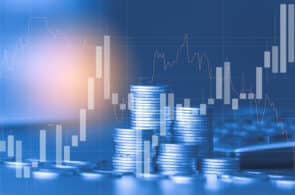However, the rollout has been far from smooth. Rare side effects linked to the AstraZeneca vaccine saw a number of countries suspend its use for a period of time, and Australia was slow off the mark with its immunisation rollout. The longer it takes to vaccinate the world, the slower the economic recovery.
Hot property
Pushing COVID-19 off the front pages was the big jump in residential property prices. Nationally, CoreLogic’s home value index jumped 5.8% for the quarter. Sydney led the jump with a 6.7% lift. In March alone the index rose 2.8%, the biggest rise in 32 years. Most of the action was on the first home and owner-occupiers front, though investor purchases were also up.
Helping to fuel the market was good employment numbers. Seasonally adjusted, the ABS reported an unemployment rate of 5.8% in February, down from 6.3% in January. However, this counts people on JobKeeper as employed. Taking this into account, Roy Morgan put unemployment at 13.2% in February, with 21% of the workforce either unemployed or under-employed.
The main fuel being added to the property price fire is ongoing low interest rates. With the RBA indicating rates will most likely remain low for years, that could continue to inflate property values and see more people priced out of the market.
Blocked artery
In late March the container ship Ever Given provided a graphic example of how small things can have a huge impact. Strong wind gusts and, possibly, human error, saw the giant ship wedge itself bank to bank across the Suez Canal, one of the world’s main shipping arteries. Suddenly 30% of world container shipping ground to a halt. Fortunately the ship was freed after a few days, and the backlog of ships was cleared a few days after that, but it was a stark reminder of how vulnerable large parts of the economy are.
Key numbers
The pace of recovery in the local and international share markets slowed during the quarter as prices crept close to or exceeded their pre-pandemic levels. The S&P/ASX200 rose 3.1%, trailing the MSCI All-Country World Equity Index, which was up 4.2%. Tech shares ran out of puff with the NASDAQ only gaining 1.4%, while the S&P500 surged late in the quarter to gain 6.1%.
There was relatively little action on the currency front. The Aussie dollar gained 3.7% on the Euro and 5.6% against the Yen, but fell 1.3% against the US dollar and 2% against the British Pound.
Iron ore prices stayed high, largely trading between US$150 and US$170 per tonne.
The outlook
Many countries are experiencing third and fourth waves of COVID-19, and it’s a fair bet that the virus will continue to dictate the way we live for some time to come.
But it’s not the only game in town. President Biden has taken climate change off the back burner and moved it front and centre. That means our government and businesses will need to pay it a lot more attention too. Expect carbon tariffs to become a hot topic.
On the local front, with interest rates all but ruled out as a tool for managing the residential property boom, talk is turning to the use of regulatory methods to dampen demand. These could involve requiring bigger deposits or limiting the rate of credit growth.
And with JobKeeper now wound up employment figures will come under close scrutiny. Expect to see a jump in unemployment this current quarter.







